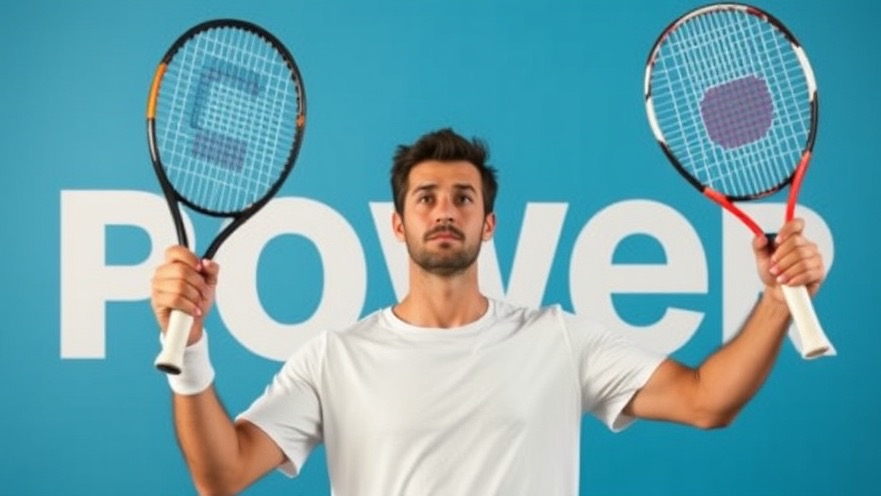
Understanding String Tension: A Game-Changing Factor for Players
When it comes to tennis, players often focus on their technique, fitness, and strategy, but there's one element that can significantly affect how well they play: string tension. In a recent exploration of this topic, we learned just how much of a difference string tension can make in ball speed and control. The video titled 20 pounds vs 60 pounds: What hits harder? dives into the physics behind string tension and its impact on a player’s performance.
In 20 pounds vs 60 pounds: What hits harder?, the discussion dives into string tension effects on serving speeds, exploring key insights that sparked deeper analysis on our end.
Is Lower Tension Always Better?
It's a common adage among players that lower string tension means a faster ball, but is that really the case? Our experiment compared a racket strung at around 25 pounds to another at 60 pounds. Observing the first serves made it clear that while the lower tension racket might offer some speed, it also introduced inconsistencies that could jeopardize a player’s control during a match.
Consistency vs. Power: A Fine Balance
Results from the serving test showed minimal power differences between the two setups, with speeds ranging from 122-129 mph for the high-tension racket compared to 126-128 mph for the low-tension racket. This suggests that the difference is not as stark as once thought and raises the question of whether sacrificing control for the sake of a few extra miles per hour is worth it.
The Common Misconception of Control
Many amateur players assume that lowering their string tension will provide them with significantly more power without realizing that it can also lead to reduced precision. The feedback from the serves indicates that while players like Adrien Mannarino may thrive with lower tensions, most players might find greater success maintaining a standard tension of 50-55 pounds.
Adapting Your Game: What Should You Choose?
If you're someone who values both control and power, it might be best to avoid going too low with your string tension. Each player has their unique style; those who possess outstanding accuracy may benefit from looser strings, while others who struggle with precision may need the stability that higher tension offers.
The Science Behind the Strings
From a physics standpoint, the string tension affects how much energy is lost during ball impact. Lower tensions may absorb more energy from a hit, causing less force to be transferred to the ball, which can be detrimental particularly in longer rallies. Therefore, understanding the mechanics and finding the right tension can be crucial in enhancing one’s performance on the court.
Take Control of Your Game: The Right Tension for You
Ultimately, the tension at which you string your racket can be a pivotal factor in your game. Testing different tensions can lead to discovering what feels right for you. It’s always beneficial to experiment a bit and see where your comfort lies.
In conclusion, approach your string tension as an essential part of your gameplay strategy. While it may seem like a minor detail in the grand scheme, as we learned from the video 20 pounds vs 60 pounds: What hits harder?, the string tension can alter not just how fast your serve, but also how accurately you can place the ball! Finding the balance can enhance your performance significantly, making it worth every swing you take.
 Add Row
Add Row  Add
Add 




Write A Comment